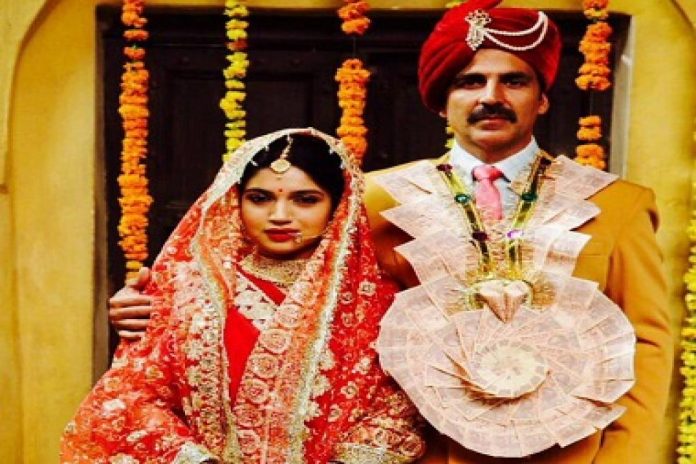By Surendra Bhatia
Everyone and everything evolves over time, even Bollywood, with one major exception — Hindi film heroines! For the longest time, in fact, from the inception of cinema in India, heroines had stayed within the pativrata template. Now, in the 21st century, after seven-eight decades of paying homage to patriarchy which had cruelly subjugated them, Hindi film heroines have not only discovered their sexuality but also the feminist voice, startlingly bold and dominating and so refreshing.
In Toilet – Ek Prem Katha, for instance, the heroine leaves her husband’s home because he doesn’t have a toilet in the house. It might seem a minor and reasonable demand in this modern world, but from time immemorial (of Hindi films), wives have carried, figuratively speaking, lotas for their husbands when they went into the fields to do their job. Just the act of defiance, the ability to say ‘no’ is a bold new attribute of the current heroines. Earlier, heroines were self-sacrificing, put themselves last, eating not a morsel till the husband had finished his meal, and giving a blissful look to the camera when he reached out for her in the bed at night… Why? Because that was the template… not to adhere to it made the heroine a vamp, and deterred filmmakers. Yet, in Toilet, the heroine actually tells the husband, he’s not going to get any intimacy till he provides her a toilet at home! These kinds of demands don’t fit into the pativrata template… and are, believe it or not, new to Hindi cinema. Thankfully, in Toilet, it all worked exceedingly well at the box-office.
Bollywood’s Mother India template is giving way to Model India. In the latest release, Pati Patni Aur Woh, the wife, playing such a traditional role of a school teacher, is not demurely clad in saris and body-covering Punjabi suits with dupattas across the chest as might be expected by traditionalists. She is, in fact, dressed in daring outfits that would give a complex to the Hindi film vamps of yesteryear. When a boy student acts fresh with her, implying sexual innuendoes, she simply brushes it off instead of going into paroxysm of hysteria — and doesn’t hold it against the boy, astonishingly. This is truly the Model India.
She is the same Model India of the 21st century who proposes in Luka Chuppi a live-in relationship to her hero when he expresses a desire to marry her. Again, this is the modern world, because in the older world, heroines insisted on going through at least a temple wedding before agreeing to kiss! And that kiss, too, would be of two flowers coyly touching each other. Then, in Queen, the heroine leaves alone on her honeymoon to Europe, and in Bala, she proposes divorce just because the hero kept his bald pate a secret from her.
How has all this come about in a film industry where heroines made a life career of being pativrata? There was a time when women used to carry two handkerchieves to cinemas whenever a film starring Meena Kumari, Nanda or Mala Sinha was released. During the times when films with Kajol and Madhuri Dixit released, they would be assured that they would leave the cinemas with their head held high because of the outstanding portrayal of devoted Indian womanhood. Now, the older section of the women audience would definitely be cringing in their seats in the cinemas when the heroine, asked about her hobbies by the boy in an arranged marriage meeting, replies point blank, with no coyness on record: “Sex!” The progress the heroine character has made in the last many years has actually left the hero fumbling to get his act together. It is the hero who doesn’t quite know how to react when the heroine suggests a live-in relationship… often times nowadays, he’s the one trying to sneak into the traditional role while the heroine has broken all barriers and cages to create a new template for herself. If this continues at the same pace, it wouldn’t be surprising if in the next few years, the hero and the heroine go through a role reversal… to which all one can say is, “High time!”.
































